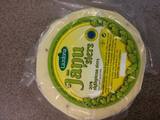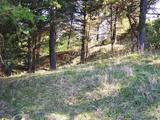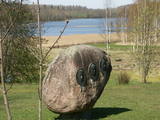| Nr | Name | Beschreibung |
|---|---|---|
|
The distance from Riga to Tallinn is more than 300 km and it takes approx. 5 hours by bus. Therefore we suggest stopping on the way for a brief excursion to a herb farm and lunch in a country pub. This stopover is approx. 1.5 hours’ drive from Riga, just at that point when one needs to stretch one’s legs and enjoy a change of scene. The visit will give an insight in rural life and it may surprise visitors to learn how well Latvians understand nature, knowing and using herbs for food, health and beauty. After the excursion, the group will have lunch in a country pub serving meals made from locally grown ingredients. |
||
|
Līdz akmenim aizved (ir norādes) skaista taka, kas līkumo pa Rogāļu strauta izrauto gravu. Strauta kreisā krasta nogāzē, ~ 0,1 km pirms tā ietekas Daugavā, iegūlis 6,5 m garais, 4,6 m platais un līdz 3,7 m augstais Rogāļu akmens, kura tilpums ir novērtēts ap 40 m³. Blakus tam atrodas liela atlūza. |
||
|
Diplomēts mežsaimnieks Imants Urpens Alojas novada "Ošlejās" audzē šitaki sēnes. Šī ir arī mācību saimniecība, uz kuru brauc mācīties pārsvarā ārzemnieki. Saimniecība ir bioloģiski sertificēta. Pieņem ekskursijas un pasūtījumus sēņu audzēšanai un micēlija iegādei. |
||
|
Das Unternehmen stellt Milch, Quark und Quarkprodukte, Joghurt, Desserts her. Für die Herstellung der Erzeugnisse wird Milch von hoher Qualität verwendet. Die Milch wird von mehr als 100 bäuerlichen Betrieben und 3 Kooperativen geliefert. Alle Produktionsprozesse werden eingehalten und verbessert für die Verbesserung des Geschmacks und Erhöhung des Nährwertes der Produktion. Betriebsbesichtigung und Verkostung. Eines der fünf lettischen Unternehmen, das den weichen Kümmelkäse "Jāņu" herstellen darf, der als garantiert traditionelle Spezialiät in das EU-Register eingetragen ist. Die Erzeugnisse haben das Qualitätszeichen „Grüner Löffel” erhalten. |
||
|
This is the only viewing platform of its kind. It is north of Pāvilosta, between the sea and Latvia’s largest gray dune. The second level of the platform offers a good view of the habitats which surround the dune, as well as the seashore and the largest seashore rock on the shores of the Baltic Sea – the Pāvilosta sea rock. You can also see the northern part of Pāvilosta. When it is windy outside, you’ll see kiteboard riders showing their tricks.
|
||
|
Diese Route ist mit sehr ungewöhnlichen Aussichten! Seda ist die einzige Stadt in Lettland, in der sich noch aus der Sowjetzeit aus der Mitte des vorigen Jahrhunderts die Planung mit dem Zentralpatz und Straßen erhalten hat, die strahlenförmig zu dem Zentralplatz führen. Ein wenig exotisch ist der Baustil der Wohnhäuser und der öffentlichen Gebäude. Das Moor von Seda, wo Torf schon während der ersten Unabhängigkeit Lettlands gewonnen wurde, ist eines der größten industriellen Naturgebiete dieser Art in Lettland und in den baltischen Ländern. Die früher bearbeiteten Torfgelände sind zum Teil überschwemmt und mit Schilfrohr zugewachsen, das bildet eine ausgezeichnete Umgebung für nistende Wasservögel und Zugvögel, die das Moor von Seda zur Erholung benutzen. Der Torf wird auch heute gewonnen und vielleicht hat man Glück und man kann den kleinen Torfzug sehen. Route information from Latvijas Lauku forums |
||
|
Einer der größten Hersteller der Produkte der Ziegenzucht in Lettland. Es werden ~ 160 rassereine Ziegen (Alpenziegen, Anglo Nubier Ziege, Weiße Deutsche Edelziege) und Hauseber (für die Zuchtarbeit) gezüchtet. Exkursion und Teilnahme an die Ziegen-Beweidung. Von März an kann man die Ziegenkitze anschauen. Verkostung von verschiedenen Käsespezialitäten, Schaumelken (ab 17:00). Verkostung und Erwerb von Fleischkonserven. Produkte ohne Konservierungsstoffe! |
||
|
Skaisto un mūsdienās atjaunoto zilā krāsojuma ēku Karaīmu ielas 5 malā sākotnēji (1810. g.) cēla Dominikāņu mūki. Kopš 1864. g. tajā 23 gadus saimniekoja policija, līdz 1887. g. te izvietoja pastu un telegrāfu. Šobrīd ēkā atrodas nacionālā parka administrācija. |
||
|
Auf dem Bauernhof werden Ziegenmilchkäse und andere Ziegenmilchprodukte hergestellt. Hier werden Ziegen, Schafe, Kaninchen und Hausgeflügel gezüchtet. Die Produkte können Sie auf Vorbestellung kaufen, im Sommer werden auch Führungen durch den Bauernhof veranstaltet. |
||
|
The beautiful, tidy and artfully laid out farmstead is situated in Jaunpiebalga district. The farmstead is naturally encorporated into the landscape, the old barn is renovated and its top floor is a place for the owner’s workshop and exhibition (she is a softwares artist). The old log house has also been renovated, and the sauna has been rebuilt. A small river flows through the farmstead, and there is also a Tuleja mound on the territory, which is a natural landmark protected by the state. |
||
|
The cave, which is 45 m deep and up to 5.5 m wide is found on the right bank of the Strīķupe river, by the Cēsis-Lenči road. The cave and its nearby sandstone cliff have suffered much damage from local visitors, which is why the administrators of the national park limited access to the surrounding territory a few years ago. You can no longer approach the cave. This is a positive example of who an important geological monument and a protected biotope can be protected. |
||
|
Kirkas Hill in Micāni. In 1792, a small castle on the hill Priežukalns (Kirkas kalns) was rebuilt into
Lutheran Church. Nowadays, the hill still is called Kirkas kalns (in German „Kirche” means „church”).
Old people say – under the church there is a big cellar where the jewellery of church and the Mantefel
family is hidden; Manteifel family vault is there too.
|
||
|
Unter Aufsicht der Landwirte kann man die Tiere füttern, streicheln und sich zusammen fotografieren lassen. Der Hof verfügt über einen Pavillon. Im Café kann man Kaffee und verschiedene Imbisse zu sich nehmen. Daneben gibt es die Möglichkeit, Souvenirs und Erzeugnisse aus Alpakawolle zu erwerben. Führungen sind für große Gruppen ganzjährig möglich. |
||
|
Der Apakšceļš (der untere Weg) - ein einsamer Weg, der durch die Wälder und
Moore zwischen Košrags und Dūmelis verläuft, mit dem viele interessante Fakten
zusammenhängen: die Mühle von Pitrags, die niemals in Betrieb genommen
wurde (es sind noch Reste von der Aufschüttung zu sehen); der Dampfkessel von
einem verunglückten Schiff, den der örtliche Baron zum Teerbrennen benutzt hat;
die ehemalige Pferdestraße, die durch das Bažu Moor verlief und der markante
Stein von Dūmele.
|
||
|
Kodas is a forward-thinking cider brand from Southern Estonia, known for its sustainable and precise approach to cider-making. They grow over 30 apple varieties organically, ensuring authentic flavors without artificial additives. Kodas emphasizes pure, undiluted apple juice in their ciders, collaborating with fermentation experts to refine unique production methods. Sustainability is central to their philosophy, with a zero-waste approach that transforms apple byproducts into spirits, purees, and more. Kodas rebranded in 2021, expanding its focus to include non-alcoholic beverages, spirits, and food products, all crafted with a balance of tradition and innovation. |
||
|
Dieses Gebiet wurde errichtet, um die kulturellen und Seelandschaften des zentralen Bereiches des Vizemer Hochlandes mit den Seen Alauksts, Inesis, Tauns, etc. und mit ihren Arten und Biotopen zu schützen. In diesem Territorium sind viele wichtige Kulturobjekte – in Vecpiebalga die lutherische Kirche, die Schloßruinen, der Gutshof, sowie die Orte, wo verschiedene bedeutende Personen des lettischen Kulturlebens gelebt und gearbeitet haben. Museen wurden eingerichtet, um ihrer zu gedenken. Die Seen sind großartig zum Angeln geeignet und Skilaufwettbewerbe werden traditionell im Seengebiet von Alauksts im Winter organisiert. Das Sproģi Naturreservat wurde auf den Inseln und Halbinseln des Sees Inesis eingerichtet.
|
||
|
Der Baltische Küstenwanderweg führt um die Pakri-Halbinsel herum, von der aus sich ein Blick auf die schönsten Landschaften der nordwestlichen Küste Estlands bietet. Der Pfad führt durch das Zentrum der Stadt Paldiski und biegt an der Bastion des Zaren Peter des Großen in Richtung des Leuchtturm von Pakri ab. Bis zum Leuchtturm verläuft der Weg auf dem Rücken der eindrucksvollen Pakri-Felsen. Weiter bis zum Ort Kersalu führt der Pfad mal steil bergauf über die Felsen, mal bergab zu einem sandig-steinigen Strand und einem wunderschönen Kiefernwald. |
||
|
Atpūtas vieta ģimenes īpašumā Vārvē, kurā tiek piedāvāti pirts rituāli. Tāpat ir iespēja pārnakšņot namiņā un atpūsties pie dabas un Ventas upes. |
||
|
Die erste katholische Kirche auf dem Kirchberg von Ludza war 1687 gebaut worden, diese fiel jedoch einem Brand zum Opfer. 1738 wurde eine neue Holzkirche im Barockstil erbaut, wegen ihres prächtigen Interieurs wurde sie als schönstes hölzernes Gotteshaus Lettlands bezeichnet. Diese verbrannte im großen Stadtbrand von 1938. Der Bau der jetzigen wurde 1939 begonnen, vollkommen fertiggestellt und restauriert wurde sie jedoch erst Anfang der 90er Jahre des letzten Jahrhunderts. |
||
|
The wooden tower was built and stands 28 metres high. It is at the top of the highest hillock of the Northern Courlandian Highlands – Kamparkalns Hill (175 metres above sea level). The tower offers one of the loveliest views in the region of the hillocks of Talsi. On a clear day, you can see all the way to the Bay of Rīga and Talsi. |
||

























